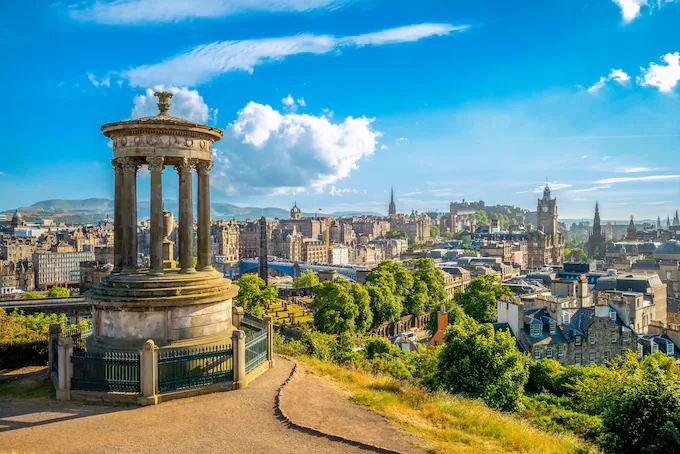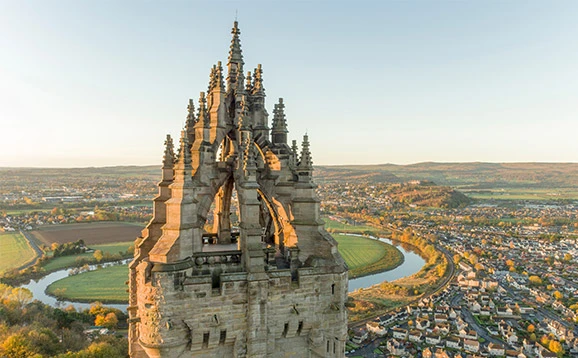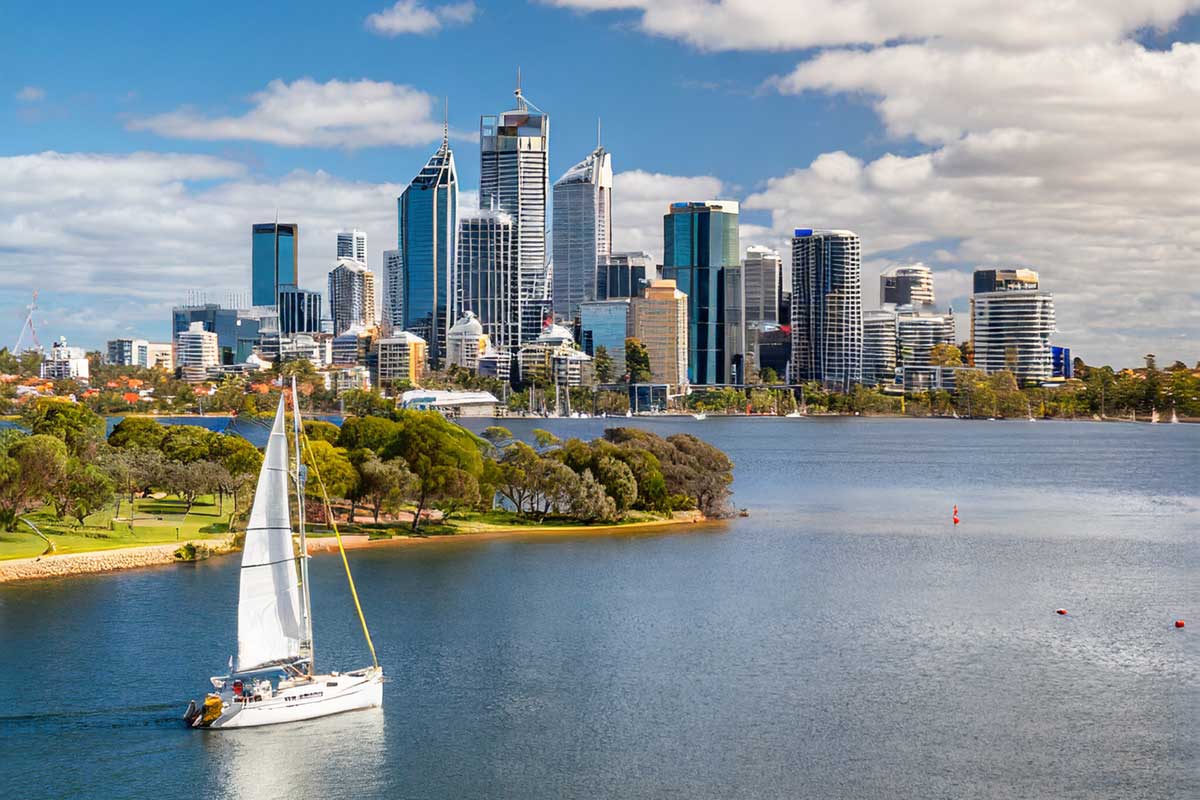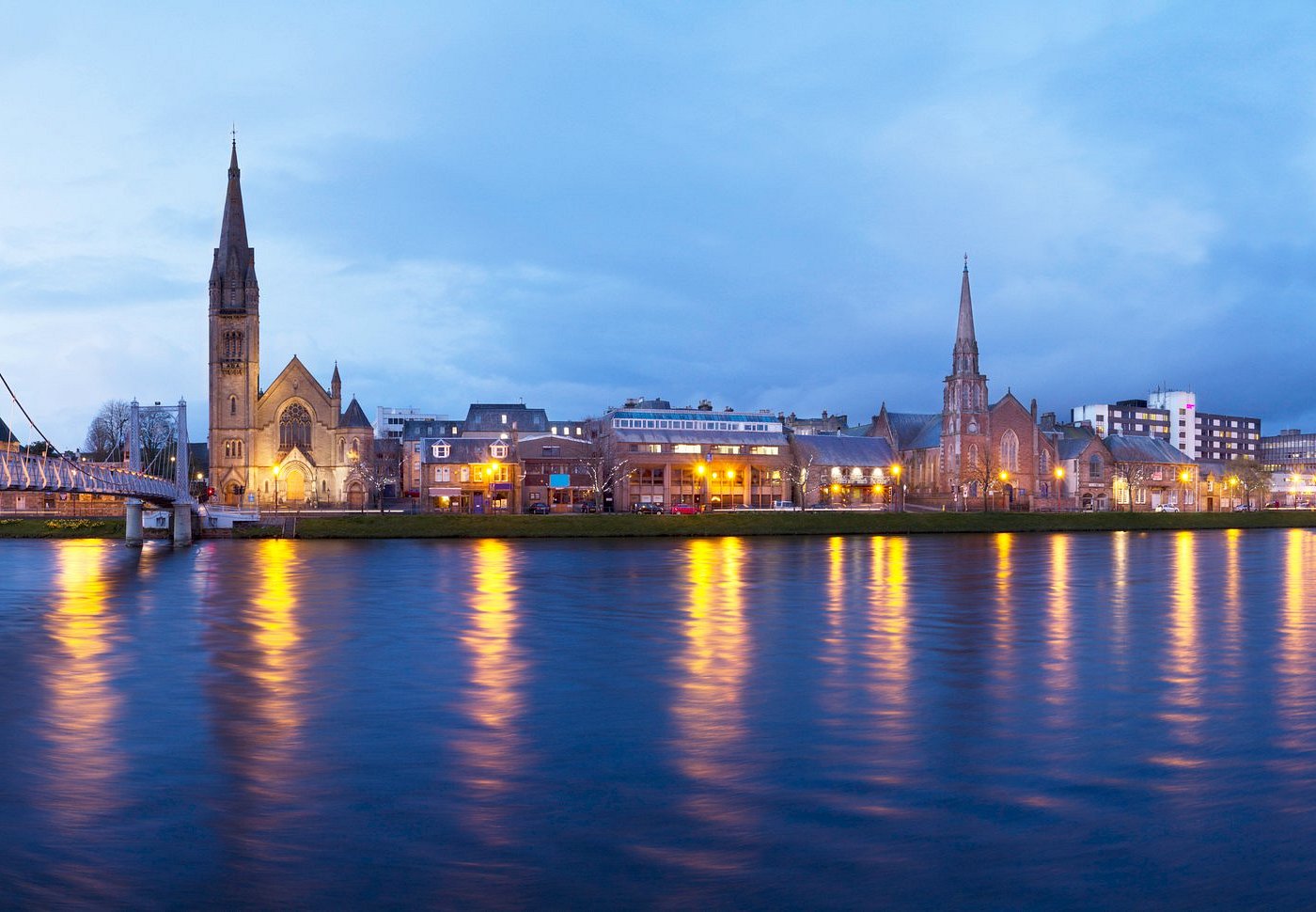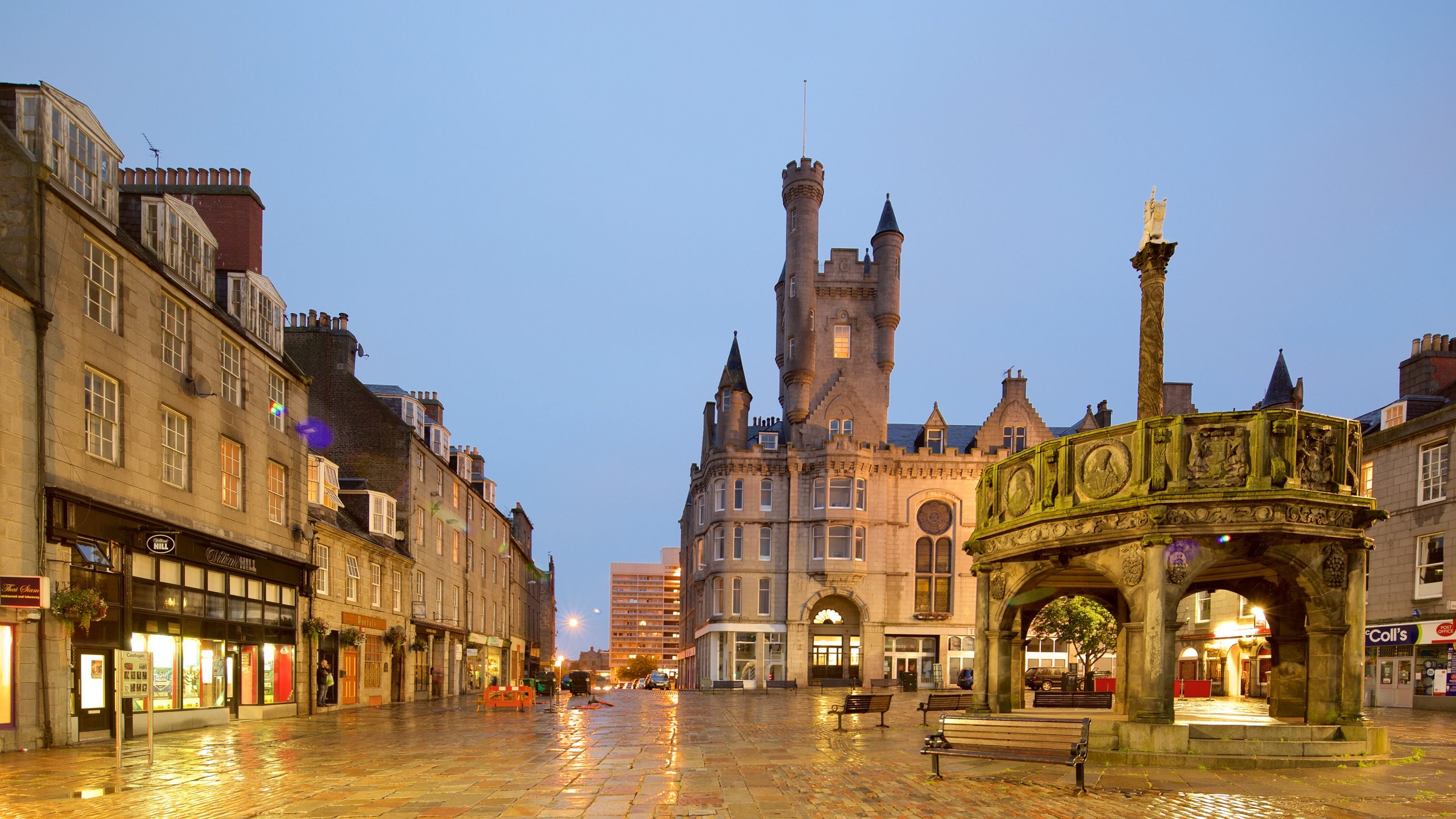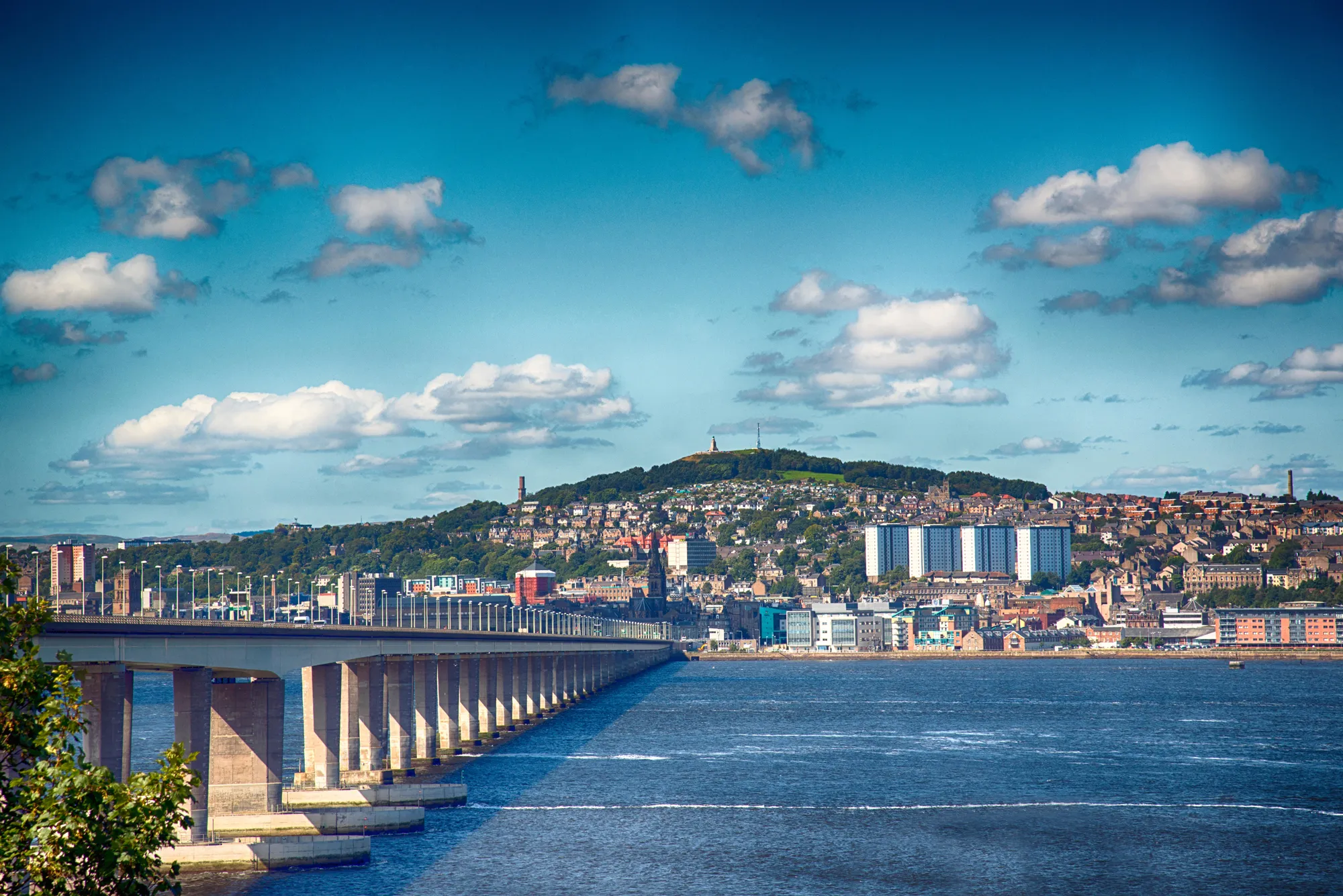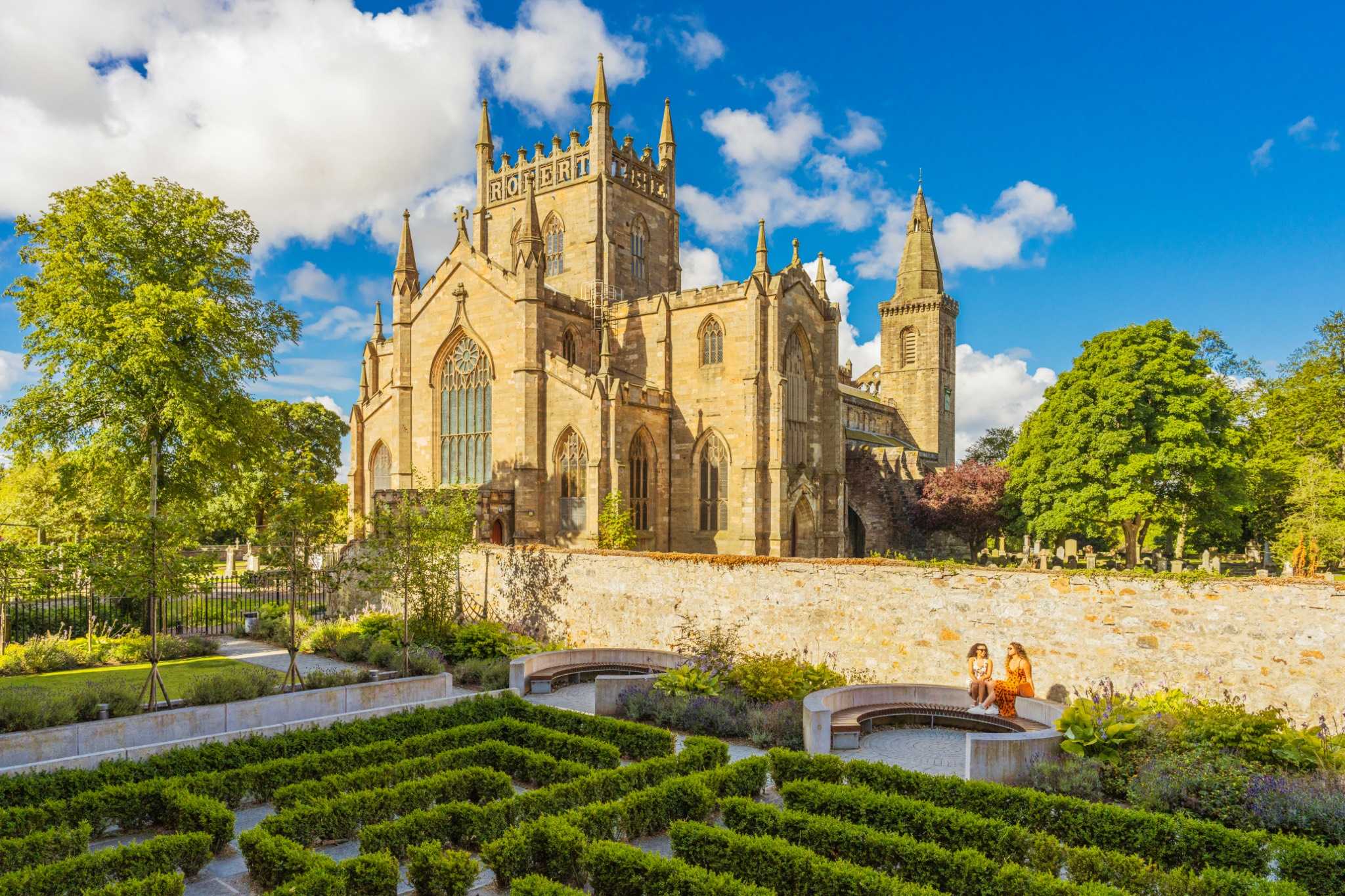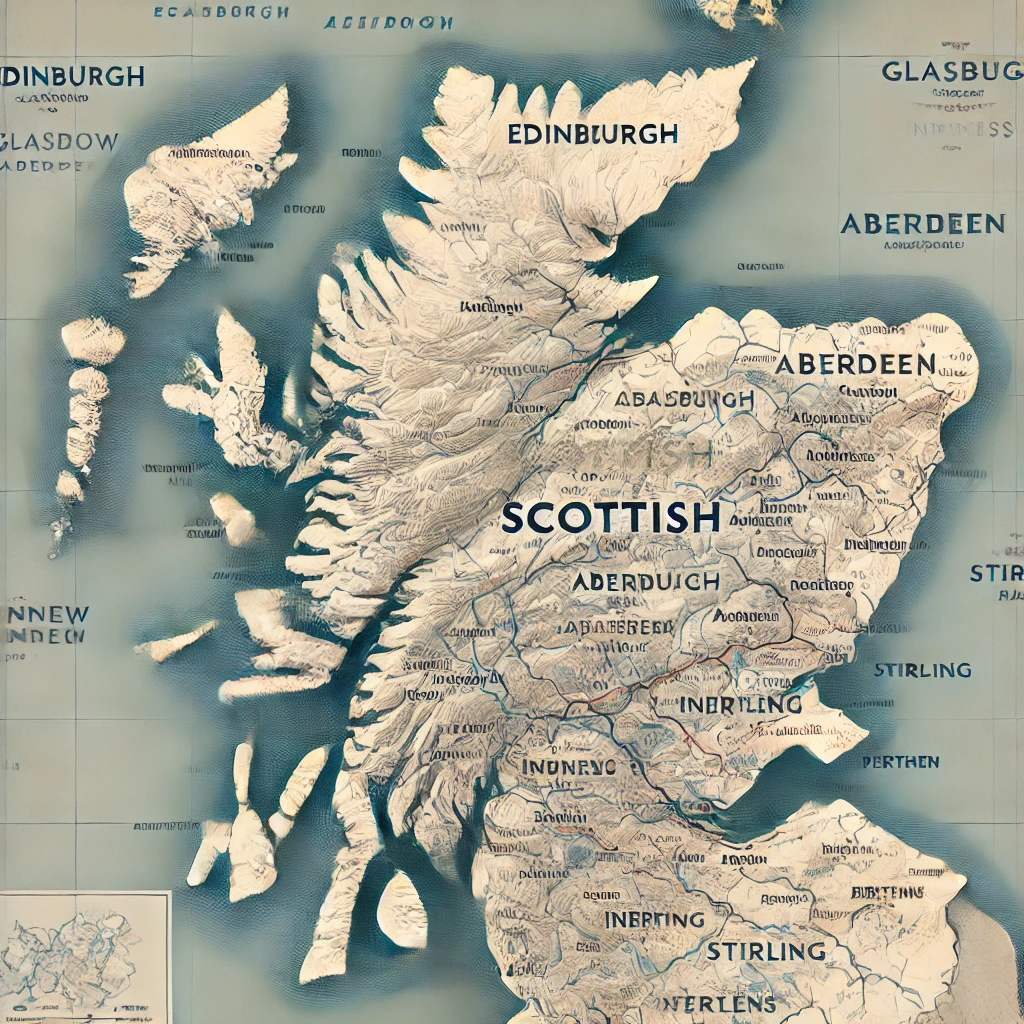8 Amazing Scottish Cities To Visit In 2025
Make 2025 your year to experience Scotland's vibrant cities! We reveal 8 must-visit destinations, offering a blend of history, culture, and modern attractions. Start planning your dream Scottish escape today.
Mar 01, 2025733 Shares104.6K Views
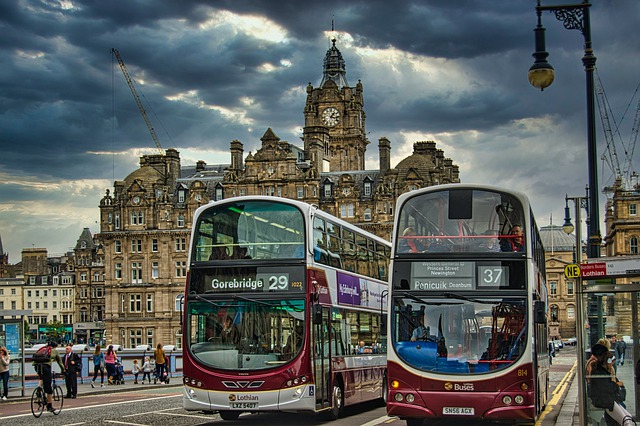
Scotland is known for its rolling hills, ancient castles, and fascinating history. But beyond the stunning Highlands and serene lochs, it is home to lively cities, each with its own unique charm. These urban areas blend history with modern life, offering a mix of culture, stunning buildings, and welcoming people.
From bustling city centers to smaller towns that have grown into cities, Scotland’s urban areas have something to offer everyone. Each Scottishcity has its own story to tell. They share tales of progress, battles, achievements, and the people who shaped them over time.
From Edinburgh’s grand historic buildings to Glasgow’s vibrant music scene, these cities provide a window into the heart and soul of Scotland. The Scotland population reflects this variety, with many choosing to live in its vibrant cities, while others settle in its rural landscapes, creating a balanced and dynamic community.
1. Edinburgh
Edinburgh received its city status in the 14th century (by Royal Charter). It is the capital of Scotland, known for its rich history, stunning architecture, and vibrant cultural scene. The city is divided into the Old Town and the New Town, both designated UNESCO World Heritage Sites.
Edinburgh's history is deeply intertwined with Scotland's own, from its role as a royal burgh to its position as the seat of the Scottish Parliament. The city is home to iconic landmarks such as Edinburgh Castle, perched atop an extinct volcano, and the Palace of Holyroodhouse, the official residence of the British monarch in Scotland.
Things To Do In Edinburgh
- Visit Edinburgh Castle:Perched atop an extinct volcano, Edinburgh Castle is an iconic symbol of Scotland. Visit its historic halls, see the Crown Jewels, and enjoy panoramic views of the city.
- Walk the Royal Mile:This historic thoroughfare connects Edinburgh Castle to the Palace of Holyroodhouse. Stroll along its cobbled streets, browse the shops, and soak up the atmosphere.
- Visit the Palace of Holyroodhouse:The official residence of the British monarch in Scotland, this palace has a rich history and beautiful gardens. Explore its state apartments and the ruins of Holyrood Abbey.
- Climb Calton Hill:Offering stunning panoramic views of the city, Calton Hill is home to several iconic monuments, including the National Monument and the Nelson Monument.
- Visit the Old Town's closes and wynds:Uncover hidden alleyways and courtyards tucked away in the Old Town. These narrow passages offer a glimpse into Edinburgh's medieval past.
- Visit the Scottish National Gallery:Located on The Mound, this gallery houses a collection of Scottish and European art, including works by renowned artists such as Botticelli, Raphael, and Monet.
- Take a ghost tour:Edinburgh is known for its spooky history and numerous ghost stories. Join a guided tour to experience the city's haunted sites and hear tales of its ghostly inhabitants.
- Hike up Arthur's Seat:This extinct volcano in Holyrood Parkoffers stunning views of the city and the surrounding countryside. It's a popular spot for hiking and walking.
- Visit the Scotch Whisky Experience:Learn about the history and production of Scotch whisky at this interactive attraction. Enjoy a tasting and browse the extensive collection of whiskies.
- Attend a performance during the Edinburgh Festival Fringe (August):This world-renowned arts festival transforms the city into a hub of creativity. If you are not there during the festival, there are still many shows year-round. This is just one type of Scottish event; for other cultural gatherings, such as Highland Games, check out a guide to the best Scottish festivals.
2. Stirling
Stirling received its city status in 2002 as part of the Golden Jubilee of Queen Elizabeth II. Known as the "Gateway to the Highlands," Stirling is located in central Scotland, where the Lowlands meet the Highlands.
Stirling has a rich history as a strategically important fortress town, guarding the crossing of the River Forth. Stirling Castle, perched on a volcanic rock, has played a key role in many pivotal moments in Scottish history, including the Battle of Stirling Bridge.
Things To Do In Stirling
- Visit the Stirling Castle:This iconic fortress, perched atop a volcanic rock, is a must-see. Experience its historic halls, admire the views from the ramparts, and learn about its pivotal role in Scottish history.
- Visit the National Wallace Monument:Commemorating William Wallace, the hero of the Battle of Stirling Bridge, this imposing tower offers panoramic views of the surrounding area. Learn about Wallace's life and legacy at the exhibition inside.
- Walk across the Old Stirling Bridge:This historic bridge, a key site in the Battle of Stirling Bridge, offers a glimpse into the past. Take a stroll across it and imagine the events that unfolded there.
- Go round the Old Town:Wander through the charming streets of Stirling's Old Town, with its historic buildings, shops, and cafes. Visit the Church of the Holy Rude, where James VI was crowned King of Scotland.
- Take a walk along the River Forth:Enjoy a peaceful stroll along the banks of the River Forth, taking in the scenic views and spotting local wildlife.
- Visit the Stirling Smith Art Gallery and Museum:Learn about Stirling's history and art at this local museum. Check out its collections of paintings, historical artifacts, and local exhibits.
- Visit the nearby Loch Lomond & The Trossachs National Park:Just a short drive from Stirling, this stunning national park offers opportunities for hiking, cycling, boating, and enjoying the natural beauty of the Scottish Highlands.
- Visit the Battle of Bannockburn Visitor Centre:Learn about another crucial battle in Scottish history at this interactive visitor center. Experience the battle through virtual reality and experience the historical exhibits.
- Take a day trip to Doune Castle:This well-preserved medieval castle, used as a filming location for Monty Python and the Holy Grail and Outlander, is a short drive from Stirling.
- Enjoy the local food and drink scene:Stirling offers a variety of restaurants, pubs, and cafes, serving traditional Scottish cuisine and local produce. Sample some local whisky or craft beer. This focus on fresh, local ingredients is a hallmark of many of the best restaurants across Scotlandprides itself on
3. Perth
Perth received its city status from Her Late Majesty Queen Elizabeth II as part of her Diamond Jubilee celebrations in 2012. Known as ‘the fair city’ and the UNESCO Creative City of Crafts and Folk Art, Perth is set on the banks of the River Tay in the east of Scotland.
Perth is a city with a rich and influential history that stretches back over 800 years. Perth was once Scotland’s capital and has always been one of the most important political, judicial, and commercial centres in Scotland. At nearby Scone Palace, many of the Scottish kings were crowned on the Stone of Destiny.
Things To Do In Perth
- Visit Scone Palace:The crowning place of Scottish kings, including Macbeth and Robert the Bruce. Check out the palace, its grounds, and learn about its rich history and connections to the Stone of Scone (Stone of Destiny).
- Visit the new Perth Museum:The fully rebuilt museum is now the permanent home of the Stone of Destiny, and visitors may learn about Perth and Kinross' history and experience various displays, including the "Unicorn" exhibition, which will be open until late September 2024.
- Walk along the River Tay:Enjoy a scenic stroll along the banks of Scotland's longest river. The River Tay Public Art Trail offers a unique perspective with sculptures inspired by the river and its wildlife.
- Hike up Kinnoull Hill:This popular spot offers stunning views of Perth and the surrounding countryside. Several trails cater to different fitness levels.
- Check out the Black Watch Museum:Located in Balhousie Castle, this museum tells the story of Scotland's oldest Highland regiment. Visit military history and learn about the regiment's contributions.
- Visit Perth Art Gallery:One of the UK's oldest collections, the gallery features works by local, Scottish, and international artists. Learn about the unique art forms and exhibitions.
- Visit St. John's Kirk:This historic church has played a significant role in Perth's history. Visit its architecture and learn about its connections to key historical events.
- Relax in the North Inch and South Inch parks:These large green spaces offer a peaceful escape from the city bustle. Enjoy walks, picnics, or simply relax by the river.
- Visit the shops and restaurants on George Street:Perth's main shopping street offers a variety of shops, from high street brands to independent boutiques. Enjoy a meal or a drink at one of the many restaurants and cafes.
- Take a day trip to nearby attractions:Perth is a great base for scouting the surrounding area. Visit the historic Dunkeld Cathedral, explore the Hermitage woodland walk, or take a scenic drive through Perthshire's beautiful landscapes.
4. Inverness
Inverness received its city status in 2000. Known as the "Capital of the Highlands," Inverness is located at the mouth of the River Ness, in the Scottish Highlands.
Inverness has a long history as a strategic stronghold and a gateway to the Highlands. The city is closely associated with the nearby Loch Ness and the legendary Loch Ness Monster.
Things To Do In Iverness
- Search for Nessie at Loch Ness:No trip to Inverness is complete without a visit to the world-famous Loch Ness. Take a boat tour, visit the Loch Ness Centre & Exhibition, or explore the ruins of Urquhart Castle on its shores. Keep your eyes peeled for the elusive Nessie!
- Visit Inverness Castle:While currently undergoing renovations (expected completion in 2025), the castle grounds offer great views over the River Ness. Learn about its history as a strategic stronghold and former courthouse.
- Walk along the River Ness:Enjoy a peaceful stroll along the scenic River Ness. Cross the iconic Greig Street Bridge and explore the Ness Islands, a series of wooded islands connected by footbridges.
- Visit Culloden Battlefield and Visitor Centre:This poignant site marks the location of the final Jacobite Rising battle in 1746. Learn about this significant event in Scottish history at the visitor centre and explore the battlefield.
- Visit Clava Cairns:These well-preserved prehistoric burial cairns date back to the Bronze Age. Take a look at the atmospheric site and imagine the lives of those who built them. Outlander fans will recognize this location.
- Visit the Inverness Museum and Art Gallery:Learn about the history, culture, and natural environment of the Highlands at this local museum. Check out exhibits on archaeology, Jacobite history, and local art.
- Visit Inverness Cathedral:This impressive cathedral, built in the 19th century, is a prominent landmark in the city. Admire its architecture and stained glass windows.
- Take a day trip to the Isle of Skye:While a bit of a drive, the Isle of Skye's stunning landscapes, rugged mountains, and dramatic coastlines make it a worthwhile day trip from Inverness.
- Enjoy the local music scene:Inverness has a vibrant traditional music scene. Visit local pubs and venues to experience live Scottish folk music.
- Visit the Victorian Market:This charming indoor market offers a variety of shops selling local produce, crafts, and gifts. It's a great place to find unique souvenirs.
5. Glasgow
Glasgow received its city status in 1492. It is the largest city in Scotland, known for its industrial heritage, vibrant arts scene, and friendly atmosphere. Located on the River Clyde, Glasgow was once a major center for shipbuilding and trade.
Glasgow's history is marked by its rapid growth during the Industrial Revolution and its subsequent transformation into a cultural hub. The city boasts impressive Victorian architecture, as well as modern developments, such as the Glasgow Science Centre and the Riverside Museum.
Things To Do In Glasgow
- Visit the Kelvingrove Art Gallery and Museum:This iconic museum houses a diverse collection of art, natural history, and Scottish history exhibits. Admire works by famous artists, explore dinosaur skeletons, and learn about Scotland's past.
- Visit the Riverside Museum:This award-winning museum showcases the history of transport, from bicycles and cars to ships and trains. Its striking modern architecture is also a sight to behold.
- Wander through the Merchant City:This stylish area is known for its Victorian architecture, trendy shops, and upscale restaurants. See its elegant streets and soak up the atmosphere.
- Visit Glasgow Cathedral and the Necropolis:Glasgow Cathedral is a stunning example of medieval architecture. Adjacent to it is the Necropolis, a Victorian cemetery with elaborate monuments and impressive views.
- Enjoy live music:Glasgow is a UNESCO City of Music, with a thriving music scene. Catch a gig at one of its many venues, from small pubs to large concert halls.
- See the street art scene:Glasgow is known for its vibrant street art. Take a walk around the city center and discover colorful murals and graffiti art.
- Visit the Gallery of Modern Art (GoMA):This contemporary art gallery showcases works by Scottish and international artists. Scout its thought-provoking exhibitions and installations.
- Take a walk in Kelvingrove Park:This beautiful park offers a peaceful escape from the city bustle. Enjoy a stroll along the River Kelvin, visit the bandstand, or relax on the grassy slopes.
- Visit the Burrell Collection:This museum, located in Pollok Country Park, is home to a diverse collection of art and artifacts, including historic paintings, Chinese pottery, and Islamic art.
- Take a day trip to Loch Lomond & The Trossachs National Park:Just a short drive from Glasgow, this stunning national park offers opportunities for hiking, cycling, boating, and enjoying the natural beauty of the Scottish Highlands.
6. Aberdeen
Aberdeen received its city status in 1891. Known as the "Granite City" or "Grey City" due to its extensive use of local granite in its architecture, Aberdeen is located on the northeast coast of Scotland, where the Rivers Dee and Don meet the North Sea.
Aberdeen has a long and rich history, from its early origins as a fishing village to its growth as a major port and trading center. Its more recent history is closely tied to the North Sea oil and gas industry. The city's architecture is distinctive, with many buildings constructed from locally quarried granite, giving it a unique and imposing character.
Things To Do In Aberdeen
- Stroll along Aberdeen Beach:This long stretch of golden sand is perfect for a relaxing walk, even on a chilly day. Enjoy the sea air, watch the waves, and maybe even spot some dolphins.
- Explore Footdee (Fittie):This charming fishing village at the end of the beach is a hidden gem. Wander through its narrow streets, admire the colorful cottages, and soak up the unique atmosphere.
- Visit the Aberdeen Maritime Museum:Learn about Aberdeen's rich maritime history, from shipbuilding and fishing to the North Sea oil and gas industry. Stroll through exhibits on ships, navigation, and the lives of seafarers.
- Admire Marischal College:This stunning building, with its intricate granite facade, is a masterpiece of Victorian architecture. Take a walk around its exterior and admire its grandeur.
- Explore Old Aberdeen:This historic part of the city is home to cobbled streets, ancient buildings, and the University of Aberdeen. Wander through its peaceful atmosphere and see its hidden gems.
- Visit the Aberdeen Art Gallery:Experience a broad collection of artwork, including Scottish and international paintings, sculptures, and decorative arts. Enjoy the exhibitions and examine the artwork on show.
- Take a day trip to Dunnottar Castle:This breathtaking old fortification, built on a rocky outcrop overlooking the sea, is a must-see. Visit the remains and imagine the stormy history.
- Visit Duthie Park and the Winter Gardens:This beautiful park offers a variety of attractions, including a Victorian bandstand, a boating pond, and the impressive Winter Gardens with its exotic plants.
- Visit the Gordon Highlanders Museum:Learn about the history of this famous Scottish regiment, from its formation in 1794 to its modern-day role. See the exhibits on its battles, traditions, and soldiers.
- Enjoy the local food and drink scene:Aberdeen offers a variety of restaurants, pubs, and cafes, serving fresh seafood, local produce, and Scottish specialties. Sample some local whisky or craft beer.
7. Dundee
Dundee received its city status in 1889. Known as the "City of Discovery" after Captain Scott's ship RRS Discovery, which was built there, Dundee is located on the east coast of Scotland, on the Firth of Tay. Dundee has a fascinating history, from its industrial past as a center for jute production and shipbuilding to its modern transformation into a hub for design and technology.
The city has undergone significant regeneration in recent years, with the development of its waterfront and the opening of the V&A Dundee design museum. This transformation makes Dundee a compelling destination for visitors touring Scotland, and a Scotland travel guidecan help you learn more of what the country has to offer.
Things To Do In Dundee
- Visit the V&A Dundee:This landmark design museum, a division of the Victoria and Albert Museum in London, focuses on Scottish and worldwide design. Admire its exhibits, admire its architecture, and enjoy the views of the River Tay.
- Visit the RRS Discovery:Study the history of Captain Scott's Antarctic research vessel. Look into the ship's decks, staterooms, and engine room, and envision life on board during an expedition.
- Climb Dundee Law:This extinct volcano offers breathtaking views of the city, the River Tay, and the surrounding countryside. It's a popular spot for walking and enjoying the scenery.
- Visit Discovery Point:This visitor center tells the story of the RRS Discovery and its voyages. Check out its interactive exhibits, see historical artifacts, and learn about Antarctic exploration.
- See Verdant Works:This former jute mill is now a museum that tells the story of Dundee's industrial past. Learn about the jute industry, its impact on the city, and the lives of the mill workers.
- Visit the McManus - Dundee's Art Gallery & Museum:This museum houses a diverse collection of art, history, and natural history exhibits. Tour around its galleries and learn about Dundee's past and present.
- Take a walk along the Dundee Waterfront:This redeveloped area offers a mix of public spaces, attractions, and businesses. Enjoy a stroll along the waterfront, visit the Slessor Gardens, or explore the nearby shops and restaurants.
- Visit Broughty Castle:This historic castle, located on the coast just east of Dundee, offers views of the Tay estuary and the North Sea. Visit its grounds and learn about its history as a defensive fortress.
- Visit the Dundee Contemporary Arts (DCA):This arts center hosts exhibitions of contemporary art, film screenings, and workshops. It's a great place to experience Dundee's creative scene.
- Visit the Mills Observatory:This public observatory offers opportunities for stargazing and learning about astronomy. Learn about its exhibits and use its telescopes to observe the night sky.
8. Dunfermline
Dunfermlinereceived its city status as part of the Queen's Platinum Jubilee celebrations in 2022. Located in Fife, north of Edinburgh, Dunfermlineis historically significant as the ancient capital of Scotland and the final resting place of many Scottish monarchs, including Robert the Bruce.
Dunfermline has a rich royal history, with connections to Malcolm III and Queen Margaret. Dunfermline Abbey, founded in the 12th century, is a prominent landmark and a testament to the town's historical importance.
Things To Do In Dunfermline
- Visit Dunfermline Abbey and Palace:This historic site is a must-see. Visit the ruins of the abbey, the final resting place of Robert the Bruce and other Scottish monarchs, and the adjacent palace, once a royal residence.
- Stroll Through Pittencrieff Park:This beautiful park, gifted to the town by Andrew Carnegie, offers a peaceful escape from the urban bustle. Enjoy walks along the glen, visit the glasshouse, and see the resident peacocks.
- Visit the Andrew Carnegie Birthplace Museum:Learn about the life and legacy of the famous philanthropist and industrialist who was born in Dunfermline. Study his childhood home and see his remarkable story.
- Vist Abbot House:This historic building, one of the oldest in Dunfermline, offers a glimpse into the town's past. Check out its exhibitions and learn about its history as a Benedictine monastery.
- Take a walk through the HeritageQuarter:Visit the historic heart of Dunfermline, with its cobbled streets, historic buildings, and charming atmosphere. Visit St. Margaret's Cave, a historic site associated with Queen Margaret.
- Catch a show at the Alhambra Theatre:This historic theater hosts a variety of performances, from music concerts and plays to comedy shows and pantomimes. Check its schedule for upcoming events.
- Visit the Dunfermline Carnegie Library & Galleries:Visit the library's collections and visit the art galleries, which showcase local and national art.
- Visit the Townhill Country Park:This large park offers opportunities for walking, cycling, and enjoying the outdoors. Visit the loch, Stroll around the woodland trails, and enjoy the views.
- Take a day trip to Culross:This charming historic village, located a short drive from Dunfermline, is worth a visit. See its cobbled streets, historic buildings, and the impressive Culross Palace.
- Visit Knockhill Racing Circuit:For those interested in motorsports, Knockhill offers exciting racing events and driving experiences. Check its schedule for upcoming races and events.
Scotland's cities are as diverse as they are captivating. From the historic allure of Edinburgh to the vibrant energy of Glasgow, the country has much to offer. The biggest cities in Scotland are Glasgow and Edinburgh, both serving as cultural and economic hubs. Alongside them, maritime Aberdeen, design-focused Dundee, historic Stirling, the Highland gateway Inverness, charming Perth, and historically rich Dunfermline add to Scotland's rich urban landscape.
Map Of Scottish Cities
The map of Scotland's citiesshowcases key urban centers like Edinburgh, Glasgow, Aberdeen, Dundee, Inverness, Stirling, and Perth. Each city has a rich history, from Edinburgh's traditional Old Town and Georgian New Town to Glasgow's industrial growth and vibrant cultural scene. Aberdeen reflects its maritime heritage and oil industry influence, while Dundee boasts a legacy of innovation in design and technology. Inverness serves as the gateway to the Highlands, Stirling is steeped in historic battles, and Perth's charm dates back centuries.
Geographically, these cities are spread across Scotland's diverse landscape, from coastal regions to inland hubs. This variety offers tourists unique experiences, from historic landmarks to modern attractions. The map serves as an essential tool for travelers, helping them plan routes, unravel Scotland’s urban heritage, and fully appreciate the cultural and geographical diversity of its cities.
FAQs
What Is The Fastest Growing City In Scotland?
InvernessInverness. The capital of the Highlands and one of Europe's fastest growing cities, Inverness is considered to be among the top five UK cities to live.
What Is The Richest Town In Scotland?
Bieldside is a suburb to the west of Aberdeen City Centre, Scotland. Together with the neighbouring suburb of Cults, it is the wealthiest area in Scotland.
Which City Is Close To Scotland, UK?
The nearest English town to Scotland is Berwick-upon-Tweed. Berwick-upon-Tweed is located in Northumberland, England, and it is situated very close to the Scottish border. In fact, Berwick-upon-Tweed is often considered to be the most northerly town in England.
Where Is The Most Beautiful Village In Scotland?
The prettiest villages in Scotland
- Anstruther, Kingdom of Fife. ...
- Tobermory, Isle of Mull. ...
- Cullen, Moray. ...
- Lochcarron, Highlands. ...
- Crovie, Aberdeenshire. ...
- Dean Village, Edinburgh. ...
- Kippford, Dumfries and Galloway. ...
- Balmaha, Loch Lomond.
Final Thoughts
Scotland's cities offer a varied and captivating experience, from the historic streets of Dunfermline to the contemporary waterfront of Dundee. Every city offers a different take on Scottish life by fusing modern energy with historical relevance.
Despite having distinct personalities, these cities all add to Scotland's unique fabric.You can truly feel the spirit of Scotland when you visit these cities. They are locations where you may appreciate the present and connect with the history, taking in all that this amazing nation has to offer.
Latest Articles
Popular Articles
